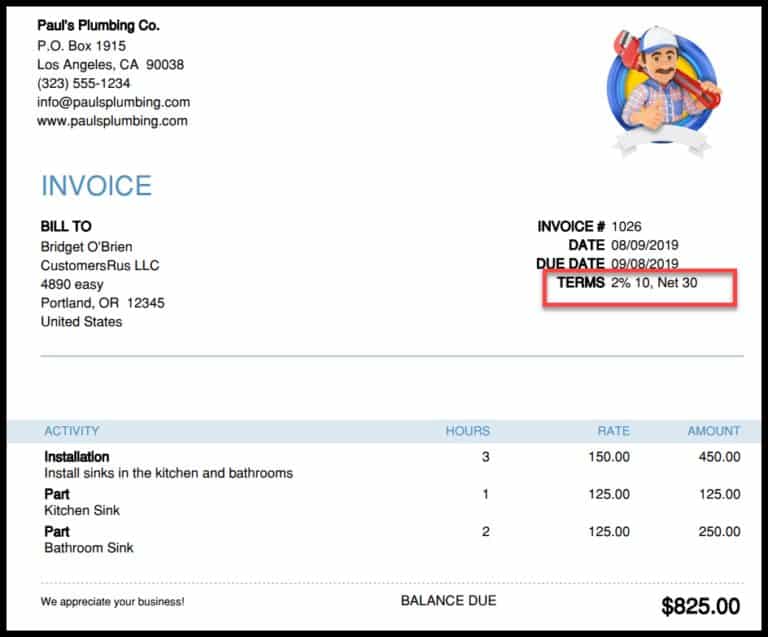You may not be familiar with accounts receivable if you’re a new business owner or have recently converted accounting systems from cash to accrual accounting. In the accounting cycle, accounts receivable plays a pretty vital role. And because accounts receivables are considered revenue, their totals immediately affect your net income. However, the final collection of any receivables balances has no effect on your retained earnings because they are already included in your revenue total. Accounts receivable is also a permanent account that is unaffected by closure entries. How is this possible though? Trust me, you’d find out soon enough as we go over the fundamentals of accounts receivable with its examples, process, and formula in place.
Understanding Accounts Receivable
Wouldn’t it be fantastic if every single one of your clients paid you in cash the moment they made an order?
Unfortunately, most companies, including mine, do not operate on a cash basis. Instead, we send our clients invoices with terms like “Net-30” emblazoned on the top indicating that we want them to pay us within 30 days after receiving the bill.
And we all know that this isn’t always the case. You may have some deadbeat clients and others who simply take their time getting their payments to you, as with most businesses.
This is where accounts receivable, usually abbreviated as “AR,” comes in. AR is the amount of money owed to you by your customers for items you’ve already sold them. It’s essentially a total of all of the bills you’ve issued to clients but have yet to be paid. This will appear as an asset on your balance sheet in your company’s financial statements.
Read Also: ACCOUNTS PAYABLE GUIDE SIMPLIFIED! (+ Detailed formula breakdown)
Definition of Accounts Receivable
In simple terms, accounts receivable is the outstanding balance of money owed to you by your customers for products or services that you have supplied to them. It represents any credit-based purchases made by a customer and is recorded as a current asset on your balance sheet.
Now that you have an almost clear picture of how this works, let’s take a look at some of its advantages.
Accounts Receivable Advantages
It’s critical to keep track of your receivables if you want to properly record your cash flow. Even if your sales are doing well, you may find yourself in a liquidity crunch if your AR continue to grow and your customers aren’t paying you quickly enough.
This is a classic example of why rapid development can be difficult for small businesses. If you aren’t getting paid quickly enough when making sales and delivering your product, you may have problems completing future orders or even funding basic company expenses because you don’t have enough cash in the bank.
So, accounts receivable is essential for tracking or staying on top of the situation. It also helps in ensuring that you collect on these debts owed by customers.
However, you should keep track of not only your overall receivables (how much money all of your customers owe you) but also who owes you money and who is overdue on their payments. With this information, you can determine which consumers to pursue payment with while keeping your bank account stocked.
Is it Better to Have Higher or Lower Accounts Receivable?
A lower accounts receivable balance is preferable in general. This indicates that your consumers pay you promptly and that they are not owing a large sum of money.
However, if your business is expanding, you may notice an increase in your AR balance as you gain more clients and sell more to them.
If this is the case, you should monitor the accounts receivable turnover ratio, using a formula though, to ensure that the percentage of AR compared to sales remains stable. Below is the accounts receivable turnover formula;
Accounts Receivable Turnover Ratio = Sales on Credit / Average Accounts Receivable
Accounts Recievable Turnover Forumla
With this formula, you can keep track of the ratio as your business grows to ensure that your accounts receivables don’t outpace your sales.
The Accounts Receivable Process
The accounts receivable process is a pretty simple system. Plus these steps will guide you if you’re looking to offer credit terms to your customers for the first time.
Read Also: ACCOUNTS PAYABLE PROCESS: How to Manage the Process Effectively
Step 1: Establish a Credit Approval Procedure for your Clients
Make sure your company has a credit approval process in place. This is so that each time you intend billing customers on credit, you and your bookkeeper will have some sort of structure to follow.
How to Create a Credit Approval Process
Before you hand out credit to your clients, there are a few things you should do. This includes;
- Creating a Credit Application: You can either start from scratch or make use of a template. They are available for purchase in office supply stores; or better still downoad one. The application must include all of the terms and conditions that apply to the credit offer, as well as compliance with federal credit regulations.
- Creating Credit Terms: If your cash flow is robust, you can extend credit for 30-45 days. However, if your cash flow is limited, you might wish to extend credit for just 10-15 days. In other words, just so clients would fully understands the whole process, accounts receivable terms should be assigned to them before they are accepted for credit.
Step 2: Prepare a bill for your clients.
Invoicing is a crucial part of the accounts receivable process. So ensure you can generate an invoice for your customers right away.
For example, suppose you sell a customer $300 worth of pens and charge them $8 in sales tax. Whether you’re manually entering invoices into a ledger or automatically with your accounting software, the table below shows how the journal entry for this Accounts Receivable example would look like using a simple formula.
| DATE | ACCOUNTS | DEBIT | CREDIT |
|---|---|---|---|
| 14/08/203 | Accounts Receivable | $308 | |
| 14/08/2023 | Sales | $300 | |
| 14/08/2023 | Sales Tax | $8 |
How to Create an Invoice Tips
Sending an invoice to your customers as soon as possible helps to ensure that payment is received as soon as possible.
- Send the Invoice Right Away: Don’t put off submitting an invoice for a week. Following the completion of a purchase, the invoice should be completed as well.
- If Possible, Use Accounting Software: One of the benefits of using accounting software is that you have the luxury of sending the invoice to your clients as soon you finish processing the sale has been.
- Ensure the Credit Terms are Prominently Displayed the Invoice: If you’re expecting payment in 30 days, make sure it’s clearly stated on the invoice. Remember that if your consumers don’t know when payment is due, they won’t be able to pay you on time.
Here is one of the numerous examples of account receivables showing the credit terms.
Step 3: Track Accounts Receivable Balances
It’s critical to keep track of your accounts receivable balances. With this, you can make sure clients are alerted of payment due dates as they approach, as well as follow up on late payments.
Meanwhile, you can run a weekly accounts receivable report if you’re using accounting software to identify which accounts are past due and which will be due soon. This would aid in the collection of past-due accounts.
Tips to track of your AR Balances
When keeping track of your receivables here are a few pointers to keep in mind;
- Always be aware of payment deadlines: You should constantly be aware of which payments are due, whether you use a spreadsheet or accounting software to handle your accounts receivable.
- Send a reminder to your customers: A quick email reminding your customers that their payment is due soon can be beneficial.
- Be proactive: If your invoice due date has passed without payment, make sure to contact your customers right away. While it does not guarantee payment, it does serve as a timely reminder to your customers.
Step 4: Post payments
The posting of payments received from customers is the final step in the accounts receivable process.
When you get payment from your customer, make the following journal entry:
| DATE | ACCOUNTS | DEBIT | CREDIT |
|---|---|---|---|
| 14/08/2023 | Cash | $308 | |
| 14/08/2023 | Accounts Receivable | $308 |
Note that since sales tax remittance is processed in a separate transaction, the sales tax is not included in this journal entry.
Payment Posting Tips
Accepting payments online is the simplest way to post customer payments. Many businesses, however, still require their customers to send payments via mail. Here are some pointers on how to properly manage customer payments, regardless of your method:
- Provide a variety of payment alternatives: Providing your clients with a variety of payment options is the quickest way to acquire payment. Despite the convenience of internet payments, some firms still choose to pay bills via check. Make sure your clients can choose between the two.
- Check that online payments are correctly posted: If your accounting software automatically posts payments from your bank, double-check that the payment is correctly recorded. In most cases, the automatic posting may go off without a hitch, although there are also scenarios where payments might get stuck in limbo or be posted to the wrong account.
What Is Accounts Receivable in Simple Words?
In simple terms, accounts receivable is the outstanding balance of money owed to you by your customers for products or services that you have supplied to them.
Is Accounts Receivable a Debit or Credit?
Accounts receivable is a debit on a trial balance until the client pays up. And because the money is now in your bank account, you’ll have to credit accounts receivable and debit your cash account once the consumer has paid. Meanwhile, on your trial balance, the final balance of accounts receivable is often a debit.
What Is Accounts Receivable Formula?
The accounts receivable formula for turnover is; Net Sales on Credit / Average Accounts Receivable.
Is Accounts Receivable an Asset or Liability?
On a balance sheet, accounts receivable are found in the section for current assets. These are things that customers owe to a business and can be turned into cash in less than a year.
What Is the Entry for Accounts Receivable?
A journal entry for accounts receivable is the accounting record of a transaction involving accounts receivable. This is a crucial step in accurately documenting this financial transaction. The accounting phrase accounts receivable refers to sales for which payment has not yet been received.
Bottom Line
What company doesn’t want additional clients? Selling products and services on credit to your consumers would greatly assist you in expanding your customer base.
It’s critical that the process is handled correctly, which includes adequate customer verification, offering credit terms that are appropriate for your company’s cash flow, and being thorough in collecting receivable balances.
Related Articles
- TRIAL BALANCE: What is Trial Balance & How Does it Work?
- Invoice Discounting: Explained!! (+ Quick tools & amp; all you need)
- BAD DEBT EXPENSE – Definition, Estimation and Calculation
- Invoice Financing vs. Factoring: Overview, Differences & Similarities
- Invoice Financing: Definition, Types, Pros & Cons
- PAST DUE: Definition, Rent Notice, Invoices (+ Free tips)







